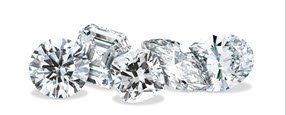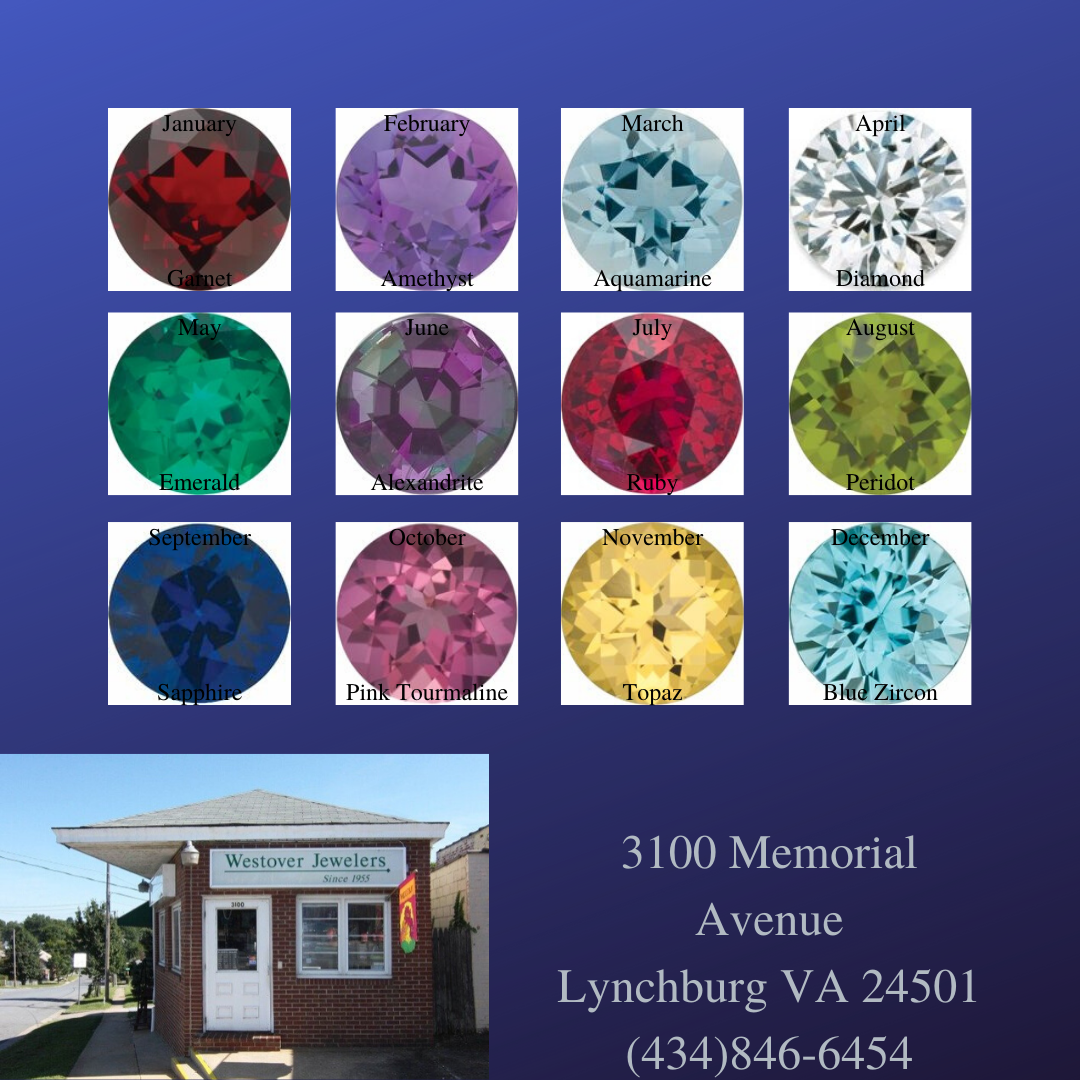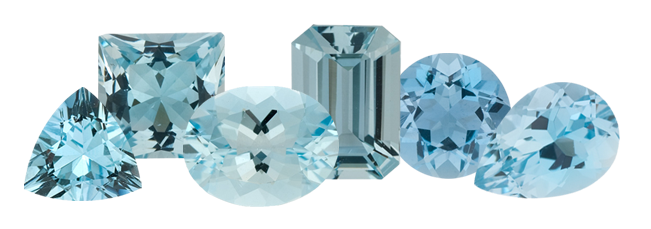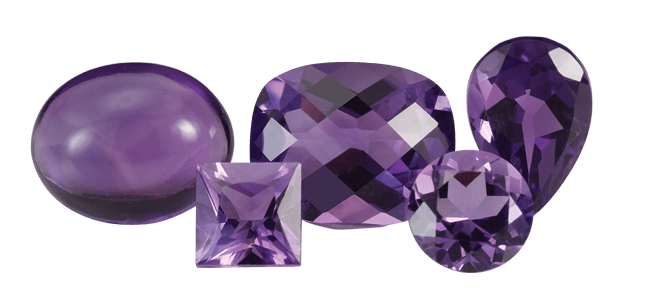Westover Jewelers
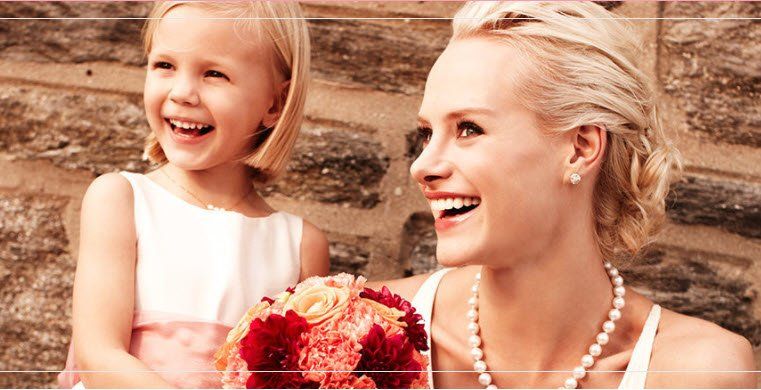
Welcome to 2023! Don't forget, January is our annual 20% off sale on Princesse Pearls! Here is the updated price list for this year: 2.5mm - $20; sale $16 3mm - $23; sale $18.40 3.5mm - $25; sale $20 4mm - $30; sale $24 4.5mm - $35; sale $28 5mm - $43; sale $34.40 5.5mm - $48; sale $38.40 6mm - $59; sale $47.20 6.5mm - $69; sale $55.20 7mm - $78; sale $62.40 7.5mm - $113; sale $90.40 8mm - $150; sale $120 (special order only) We have plenty of pearls in stock and look forward to seeing you soon!
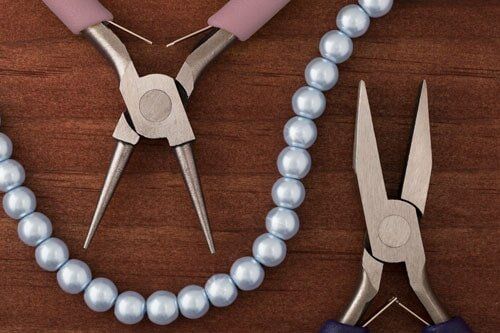
As promised, more vocab! Let me know if I've missed something you'd like to see. RING TERMS MOUNTING- the metal part of a ring, without any stones included SEMI-MOUNT- the mounting plus accent stones, no center stone SETTING- the entire ring, usually with a descriptor; e.g. bezel setting, channel setting, etc. HEAD- the metal part that holds the gemstone; ex. basket, bezel SHANK- the metal that goes around the finger, does not include the center head(s); can be decorative, accented, or plain; also called the band SHOULDERS- the top part of the shank, next to the head GALLERY- elevates the head in some settings; allows extra light under the stone; can be decorative, accented, or plain; also called the undercarriage ANNIVERSARY- band with diamonds or other stones that do not go all the way around ETERNITY- band with diamonds or other stones that go all the way around; cannot be sized BAND- a ring that only circles the finger without head(s) on top; can be plain or have stones CATHEDRAL- the head sits up high enough that a straight band can sit directly against the shank; usually has pronounced shoulders as well COMFORT FIT- domed on the inside instead of flat; contemporary metal bands almost always are comfort fit, wider bands are often ordered as comfort fit ENHANCER- made to be worn with a gemstone ring, has stones or a design that wraps around the center stone; also called a wrap or guard RING GUARD- a piece of metal put inside of a ring shank to take up extra space if a ring is too large; useful for people with large knuckles LOW PROFILE- any setting that doesn’t sit up high INSERT- 2 rings joined by bars at the bottom so that another ring goes in the middle; also called a jacket or double guard SOLITAIRE- ring with a single focal gemstone, without accents or halo STACKABLE- band with or without stones that can be worn alone or with other coordinating bands; anniversary or eternity bands are considered stackable CHAIN TERMS ANCHOR- flat links with a bar in the middle BALL- series of balls connected by small wires, usually fragile BOX- square links made of flat metal instead of wire, mirror polish BYZANTINE- interconnected circles in a very intricate pattern; a form of chainmaille CABLE- links (usually oval) that pass through 2 other links in a row; a “regular” or “plain” chain CUBAN- links that are shaped so that they all lay flat,usually heavy and/or domed CURB- links interlock and lay flat, can be beveled or round; Cuban is a type of curb chain FANCY- any chain made of non-standard links FIGARO- curb chain made of short & long links; usually a pattern of 3 short, 1 long FRANCO- curb chain made of more intricate links so it appears round or boxy HERRINGBONE- flat v-shaped links that alternate direction in each row OMEGA- flat metal plates crimped over a mesh base; sometimes called cubetto PANTHER- flat solid links in a brick pattern ROLO- small round links made of domed metal instead of round wire ROPE- oval links that pass through several others to create a twisted pattern; looks like a rope SAN MARCO- long domed links set at an angle and held together by pins SINGAPORE- flat thin links are woven together to form a twisted pattern SNAKE- round & curved bands joined together tightly, resembles a snakeskin pattern SPIGA- small figure-8 links woven in the same direction, creates a squarish look; also called a wheat chain EXTENDER- any chain added to an existing piece of jewelry to increase the length; usually made of large links so the clasp can be hooked into any link EARRING TERMS EARNUT- small metal piece put on the post of an earring to hold it on; earring back DANGLE- any earring that hangs down and moves DROP- any post earring that comes below the earlobe, can move or not HOOP- circular earring that goes from the front of the earlobe to the back POST- straight wire extending back that goes through the ear, secured by an earnut BALL- spherical stud earring BUTTON- flat or domed stud earring STUD- any earring on a post that does not drop or dangle WIRE- curved metal that goes through the ear; plain or decorative, holds a dangle or drop LEVERBACK- wire with a hinged back to secure the earring in place OMEGA BACK- post earring with a hinged back shaped like the Greek letter Omega NONPIERCED- earrings that clamp onto the ear instead of going through; can be clip-on, screwback, or cuff THREADED BACK- post earrings with threads like a screw, requires a specific earnut; usually found on valuable gemstone or diamond studs; sometimes incorrectly called screwbacks SCREWBACK- nonpierced earrings that clamp onto the ear by a flat-ended screw BRACELET TERMS BANGLE- rigid bracelet that completely circles the wrist; can be hinged or slip-on ADJUSTABLE- has long chains and a slider bead instead of a clasp SECURITY CHAIN- a short chain that connects the ends of a bracelet; helps keep the bracelet from falling off if it comes unfastened LINE BRACELET- a pattern of repeated links, usually with diamonds or other gemstones TENNIS BRACELET- a line bracelet of diamonds, usually basket-set; the name came from Chris Evert (and others) wearing one while playing professional tennis

Sapphire is the birthstone for September. It is also a traditional gift for the 45th wedding anniversary. Most people think of cornflower to navy blue stones, but sapphire comes in every color (except red)! History The word “sapphire” comes from the ancient Greek word for blue. Back then, it was used for lapis lazuli instead of the gems we know as sapphires today. It was a gem that the Greeks wore to worship the god Apollo and to visit the Oracle of Delphi. You can find mentions of sapphire in the Bible. Solomon wore a sapphire ring. That may be the basis of royalty wearing sapphires to be associated with wisdom. It was also one of the stones included on Aaron’s breastplate. Sapphire is sometimes associated with Abraham. In Medieval times, the high clergy wore sapphire rings. Its blue color was said to represent the majesty and tranquility of the heavens. And from the 1500s until the early 20th century, it was a second birthstone for April (along with diamond). It was re-assigned to September in 1912. You may be familiar with Princess Diana’s sapphire engagement ring. It now belongs to her son’s wife, Kate Middleton. Diana herself selected the ring because it reminded her of her own mother’s ring. The largest and most famous sapphire is the Star of India. At 563.35 carats, it is the size of a golf ball! It was found in Ceylon (now Sri Lanka), which was considered by the British to be part of their Indian colonial territory. The Moors who discovered it sold it to European traders instead of the British. Later on, a Tiffany gem trader acquired it on behalf of J.P. Morgan for display at the 1900 Paris Exposition. Morgan later donated it to the American Museum of Natural History on Central Park West in Manhattan. The Star of India was stolen in 1964, but quickly recovered. Two other famous sapphires are the Midnight Star and the Star of Asia. It is interesting that they are all star sapphires. Metaphysical Throughout history, gemstones have been considered healing stones, or representative of traits or powers. Sapphire has long been associated with wisdom, insight, discernment of difficult situations, and even ascribed the power to make peace between warring parties. Sapphire has always been a popular choice for engagement rings to represent truth, sincerity, and faithfulness. It is also said to protect against envy. Clergy and royalty wore sapphires through the Middle Ages to attract wealth, spiritual enlightenment, inner peace and symbolize Heaven. For crystal healers, sapphire is used for: hearing, inflammation, burns, cancer, depression, and poisons. It is also said to bring joy, dispel evil thoughts, and bring inner peace. Geological Sapphire is the mineral corundum. Corundum is found in every color, and always called sapphire except for red (that’s ruby). Traces of other minerals determine the color. Iron and titanium cause blue. Many stones are treated to enhance their color. These treatments are required to be disclosed to the consumer. Heat is the most common treatment; there is also irradiation and lattice-diffusion. Sapphire is mined from alluvial deposits rather than out of raw stone. It is found in Sri Lanka, India, Myanmar, Thailand, Australia, Tanzania, Kenya, Madagascar, Ethiopia, Nigeria, and the United States. The Yogo Gulch in Montana produces a distinct shade of blue with a hint of teal. Caring for sapphires is easy. Warm soapy water and a soft brush work well. It is also safe to use ultrasonic or steam cleaners. Sapphire’s durability and color range make it an excellent choice for any jewelry.
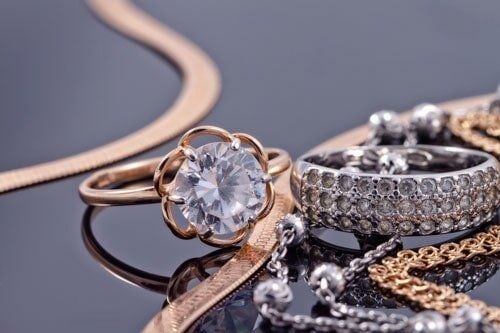
Here in the store, we use words specific to jewelry that aren’t necessarily familiar to our customers. I thought a glossary might be helpful. Watch for Part II, coming soon! GENERAL TERMS ALLOY- a blending of different metals; e.g. 14k gold, sterling silver, 950 platinum BAIL- decorative ring that holds a pendant on a chain BASKET- gemstone setting with prongs and a gallery rail; usually 4 or 6 prongs BEZEL- gemstone setting that surrounds the stone, held in by a rim on the front CARAT- the weight of a gemstone; 1 carat = ⅕ gram CASTING- pouring molten metal into a mold to harden into a specific shape as it cools CHANNEL- gemstone setting that holds stones in a trough with a rim over the edges CHARM- small ornamental piece hung on a bracelet or necklace; also called a pendant CLASP- the closure of a piece of jewelry, there are many different types of clasps (often called clamp, latch, hook, claw, etc) CLUSTER- setting of multiple gemstones together, usually in a circle or flower shape ELECTROFORM- electroplating of a shape made of wax so that the finished product is hollow ELECTROPLATE- using electricity to fuse a very thin coating of metal onto the surface of an item; the underlying shape is usually an unknown base metal FILIGREE- ornamental work made from intricate wires FINDINGS- the functional parts of a piece of jewelry; e.g. clasps, jump rings, ear wires GEM- a stone that has been cut and/or polished for use in jewelry HALLMARK- stamp on jewelry with a quality mark and/or manufacturer’s label JUMP RING- wire circle used to attach components together KARAT- the amount of gold in an alloy, measured in parts of 24; e.g. 10k, 14k, 18k MONOGRAM- set of 3 initials; the last initial is usually larger and in the center PENDANT- ornamental piece hung from a chain; also called a charm POLISH- buffing the surface of metal or stone to a shiny finish PRONGS- metal wires used to hold a gem in place in most settings QUARTZ MOVEMENT- internal workings of a battery-operated watch SLIDE- decorative charm that the chain passes through ULTRASONIC- a machine used to clean jewelry, it vibrates to knock dirt loose
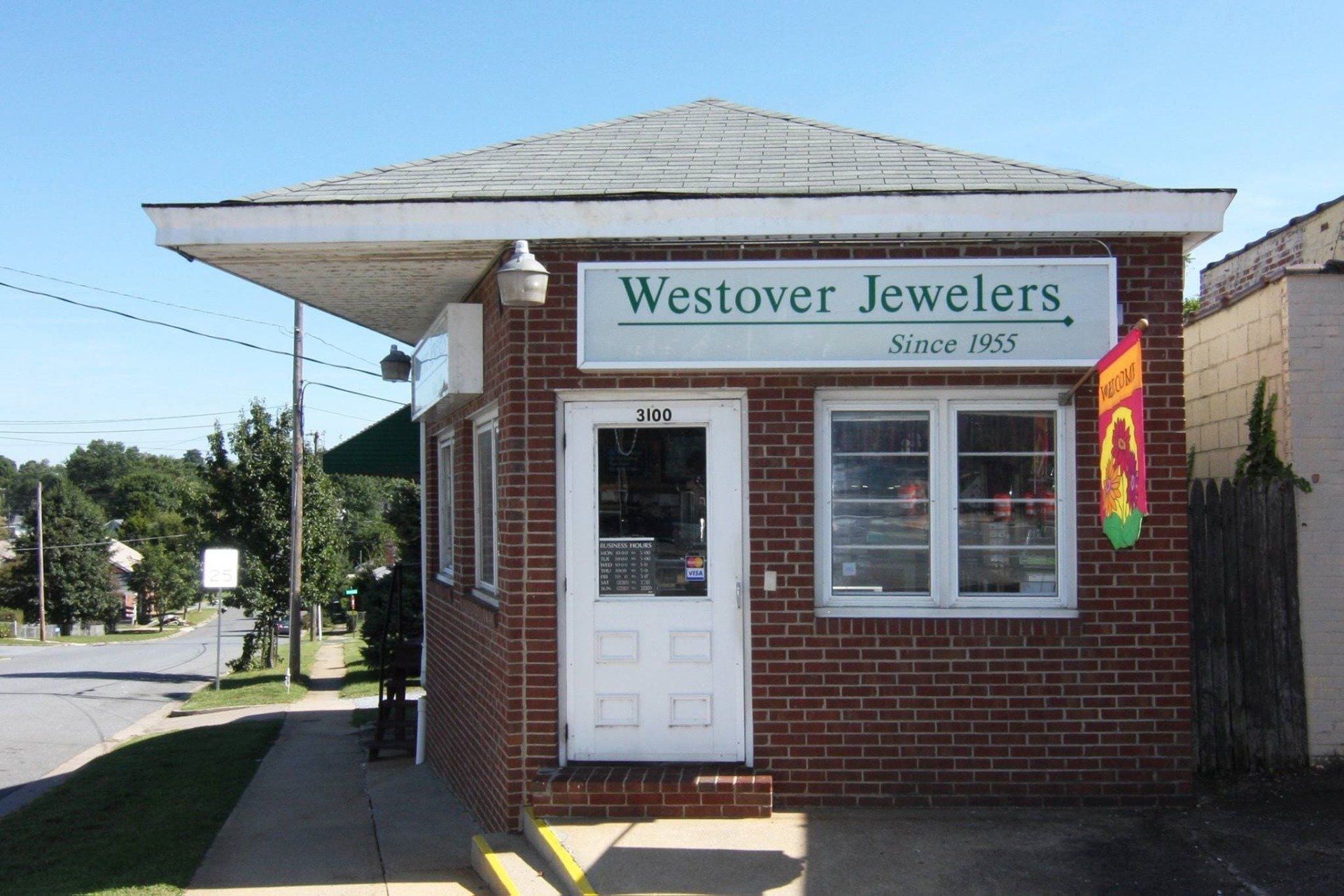
We do get LOTS of questions over & over, so we’ll address some of them here. Feel free to call us at (434)846-6454, or message us any time. - Can we quote over the phone? The short answer is no. There are so many variations in pricing, based on so many different factors, that it is very difficult to even guess or “ballpark” a price without actually seeing your piece. - Are there set prices on anything? Yes; see https://www.facebook.com/pg/WestoverJewelers/services/ for those. - What jewelry do you carry in the showcase? We have several different lines available: Black Label and Bella Cavo by Kelly Waters, bangles and lockets by Marathon, sterling silver earrings, chains, and fashion jewelry, pearls, and more! We also have a full showcase devoted to our fine jewelry prototypes. - What is a prototype? A demo piece of jewelry created to look like a real piece. We have numerous designs for you to see and customize to suit you. We can build the piece exactly as you see it here, or you can use your own stones, make changes to the metal type or center gems. We have samples of a few of the monogram jewelry styles that are available as well. - Can you tell me the value of my jewelry? We can do a full appraisal for you. This is usually done for insurance or estate purposes, and starts at $80/piece. If you bring your jewelry into the store, we are happy to take a quick look and let you know if it is costume or genuine, and whether the appraisal would be worth the cost, but we cannot give you a value on the spot. *NOTE: We cannot appraise watches or any items other than fine jewelry. - Can you recast/re-use my old gold jewelry? No, we don’t do any casting. Even if you turn in your old empty mounting, it is for scrap value, not worked into your new piece. At this time we do not know of anyone that offers this service. - Can you reset my stones from my old jewelry? Yes, we can get a ready-made mounting or we can custom design one just for you. - Do you buy jewelry/gold? Do you take jewelry on consignment? No, we do not. We know that the local pawn shops do, but that it won't be for a high amount (that's how you get lower prices when you buy from them). We don't know of anyone else that buys jewelry or takes it on consignment. - Do you still restore old photographs? No, we do not. The website and our social media channels have been updated to reflect that. We can recommend Bright Images just up the street from us. Several customers have told us they were happy with their restoration service.


